Lugares de interés (POIs) del Mapa
3: Old Franklin, Missouri
The Santa Fe Trail had several points of departure over the years but Old Franklin, Missouri was considered the origin of the Santa Fe Trail. In 1821 many of the famous characters of the Santa Fe Trail like Kit Carson and M.M. Marmaduke called Old Franklin home. Before travelers could leave on the trail they had to outfit their wagons and the town of Old Franklin supplied provisions and frontier guides were available for hire. Old Franklin, Missouri sewed as the starting point of the Santa Fe Trail until 1829 when the town was flooded. Arrow Rock then became the trail head.
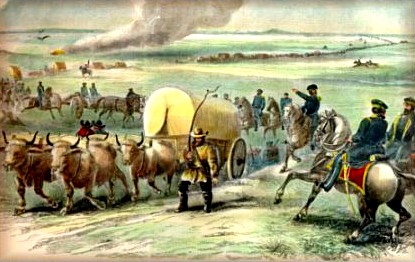
Photo Source
Más sobre Old Franklin, Missouri
4: Mountain Route
The mountain route of the trail was a safer route to travel. The route over the mountains was about two hundred thirty miles long. Running through it was a large supply of fresh water. Also there were very few warlike Indians in the area.. Even though this was a safer route to tavel, many settlers chose to take the Cimarron Cutoff through the desert.
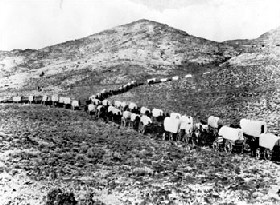
Photo Source
Más sobre Mountain Route
5: Cimmaron Cutoff
The Cimarron cut off was one of the ways to get to Santa Fe, New Mexico. Rather than going over the mountains, travelers could choose to go across the Cimarron desert. Although it was a shorter route, by ten days, settlers faced the risk of running out of water. Many travelers would find themselves running dangerously low on water for their livestock as well as their families. Also there was a chance of running into bands of Indians.
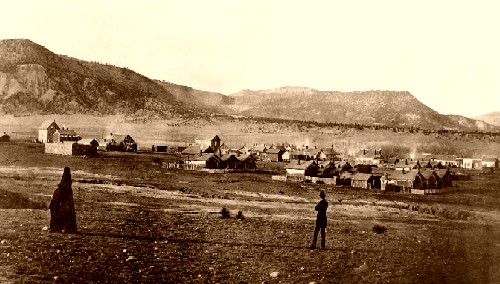
Photo Source
Más sobre Cimmaron Cutoff
6: Wagon Mound
In the 1860s travelers on the Santa Fe Trail, coming from the war torn eastern United States, were looking for a new beginning in the West. After crossing the Raton Pass, they saw in the distance a large volcanic rock that looked like a Conestoga wagon. As they drew near the rock they noticed the lush green grass and abundant water supply in the area. Travelers came up with the name Wagon Mound for the region and it became a rest stop for people along the Santa Fe Trail. Today, Wagon Mound is known as the greatest of the many landmarks on the Santa Fe Trail.
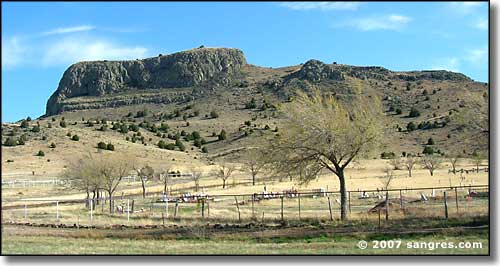
Photo Source
Más sobre Wagon Mound
7: Santa Fe
The city of Santa Fe marked the end of the Santa Fe Trail. This is where the traders stopped to trade their furs, textiles, and animals that they had brought with them. Local people would barter with the travelers until they had enough money to get home. Then these people would travel back to Franklin to repeat the journey. Those settlers who were planning to stay in the west, looking for a new beginning, usually remained in the Santa Fe area.
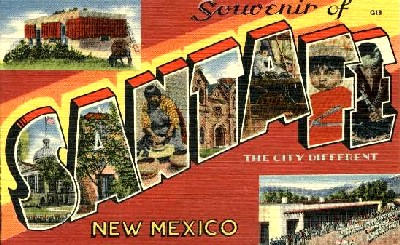
Photo Source
Más sobre Santa Fe